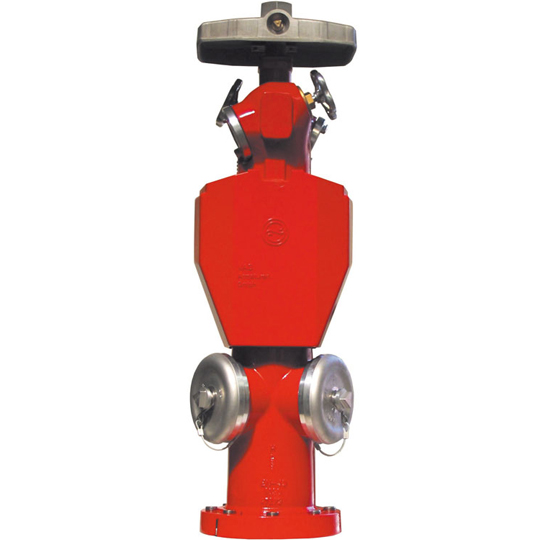How are standpost hydrants properly closed?

In order to close standpost hydrants with drop jacket properly, the shut-off system of the hydrant is closed by turning it to the right at the hydrant head with the outlet valve slightly open:
This is described in both the bob综合体育官网下载 Operating Instructions and the DVGW Work Sheet W311 “Selection, Installation and Operation of Hydrants”.
Why is this procedure so important? Unless at least one outlet valve is slightly open while the drop jacket hydrant is being closed, actuation components may be damaged and, in the worst case, the main shut-off valve of the drop jacket hydrant may fail completely.
In most of the standpost hydrants sold in the market today, the closing direction of the shut-off cone in the hydrant is from the bottom to the top. During the closing process, the shut-off cone is pulled into a cylindrical sealing area from below and shuts the hydrant off by initial radial compression. If before the closing of the drop jacket hydrant both upper outlet valves are closed by mistake, the complete upper hydrant pillar is filled with water. If during closing the shut-off cone is then pulled into the sealing area, the water in the upper pillar can no longer be displaced as soon as the hydrant shuts off.
Now, while it is moving upwards to close the hydrant, the shut-off cone should compress the water present over its remaining travel. As water is incompressible, this is physically impossible and immediately leads to a sharp pressure rise. In this case, considerably more than 50 bar, i.e. many times the admissible operating pressure may occur inside the upper pillar. For the operator this means dramatically higher operation forces at this moment. If the operator uses excessive force to close the hydrant, this may result in the damage of the stem nut of the driving thread or to deformations or even to a break-off in the area of the valve cone fasteners.
Quite frequently the resulting damage goes unnoticed at first, but when the hydrant is used again for fire-fighting, this damage may lead to a failure of the complete hydrant.